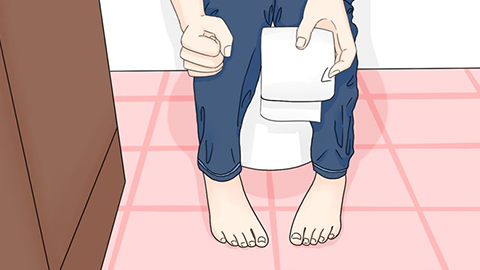How to Determine if You Have an Anal Fissure or Hemorrhoids
Generally, the differentiation between anal fissure and hemorrhoids is usually based on aspects such as pain characteristics, bleeding presentation, prolapse of masses, specialist examinations, and auxiliary examinations. If any abnormalities are noticed, timely medical consultation is recommended. Detailed analysis is as follows:

1. Pain Characteristics: Anal fissure pain often presents as severe pain during and after defecation, showing periodic episodes. Stool irritation of the fissure causes burning or knife-like pain. Pain briefly relieves a few minutes after defecation, followed by intense pain again due to anal sphincter spasm, which may last for several hours. Hemorrhoidal pain is generally not obvious, only occurring when internal hemorrhoids prolapse and become incarcerated, external hemorrhoids develop edema, or thrombosis forms, manifesting as distending or persistent pain.
2. Bleeding Presentation: Bleeding from anal fissures is usually minimal, often seen as blood on the stool surface, toilet paper, or dripping after defecation, with bright red blood. Hemorrhoids bleeding typically occurs during bowel movements, presenting as jet-like or dripping bleeding, with varying amounts. In severe cases of internal hemorrhoids, bleeding can occur during defecation, coughing, or physical exertion, with similarly bright red blood.
3. Prolapse of Masses: Anal fissures usually do not involve prolapse of masses, with only visible anal fissures and sentinel piles. In the case of hemorrhoids, internal hemorrhoids may prolapse outside the anus during defecation once they progress to a certain stage. Initially, they may spontaneously retract, but later manual repositioning may be required or they may not retract at all. External hemorrhoids generally present as soft, raised masses visible outside the anus.
4. Specialist Examinations: During visual inspection, doctors can observe longitudinal fissures in the anal canal skin, sentinel piles, and hypertrophied anal papillae in patients with anal fissures. External hemorrhoidal masses or prolapsed internal hemorrhoids may be seen in patients with hemorrhoids. During digital rectal examination, patients with anal fissures often experience significant tenderness in the anal canal, with palpable hardened nodules formed by fibrosis of the fissure. Digital examination in patients with hemorrhoids usually reveals no specific findings, although thrombosed external hemorrhoids may feel like firm subcutaneous nodules.
5. Auxiliary Examinations: When necessary, enteroscopy can help rule out diseases such as colorectal inflammation or tumors that may cause bleeding and pain symptoms. Especially when suspecting hemorrhoids or anal fissures combined with other intestinal lesions, enteroscopy can provide a clear diagnosis and prevent missed diagnosis.
If anal fissure or hemorrhoid issues are suspected, self-diagnosis should be avoided to prevent delays in treatment. Prompt visits to the proctology department at a reputable hospital for specialist examinations and diagnosis are recommended. Maintaining good bowel habits, avoiding prolonged sitting, consuming more fiber-rich foods, preventing constipation, and early intervention upon symptom onset are essential for daily care.





